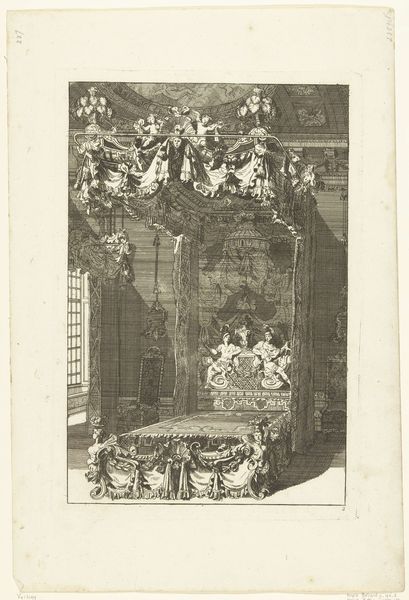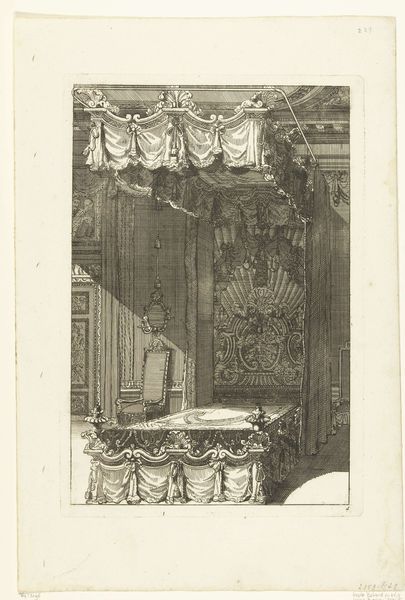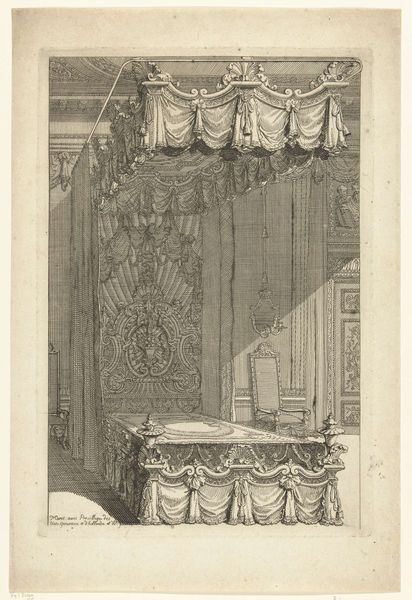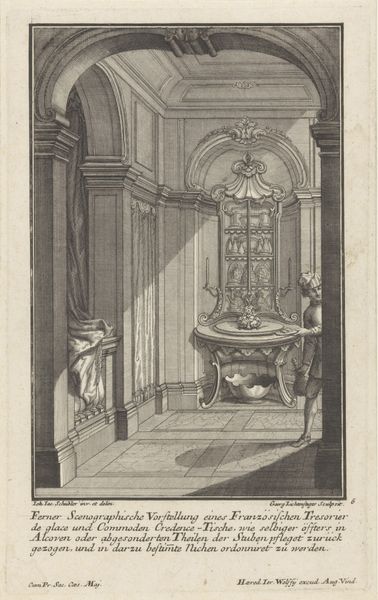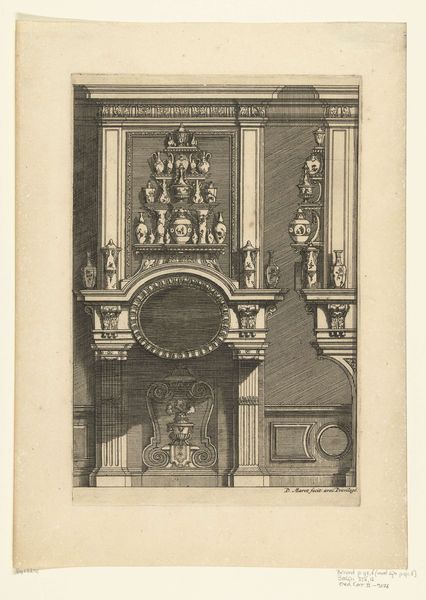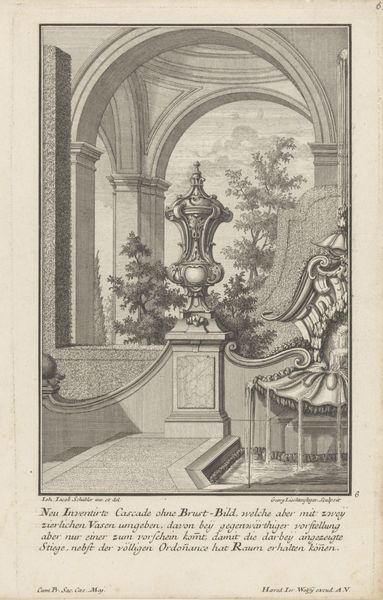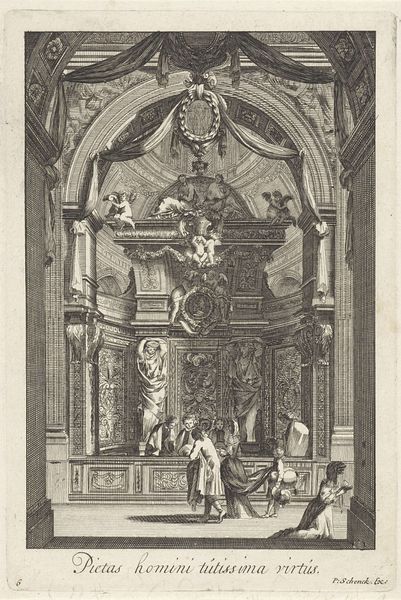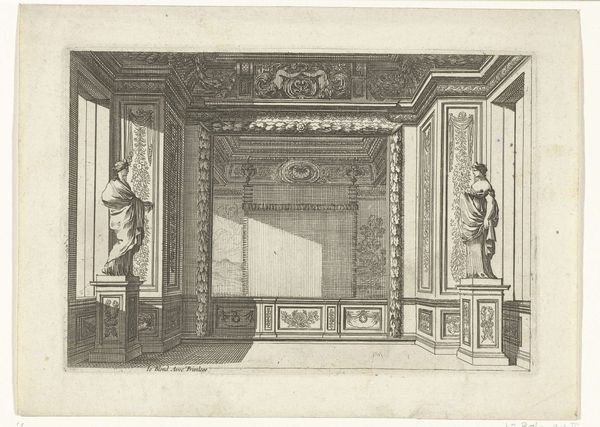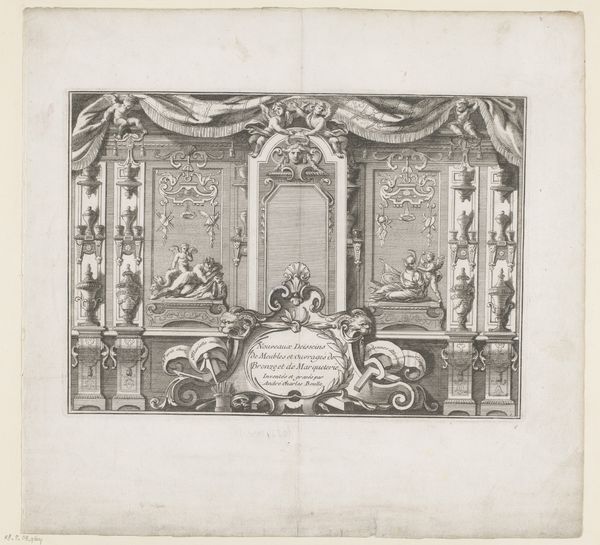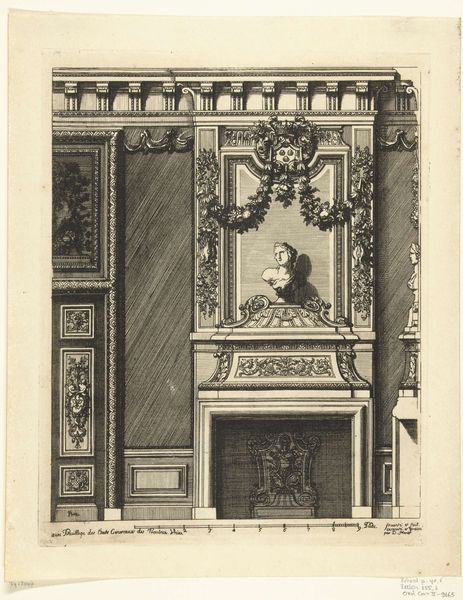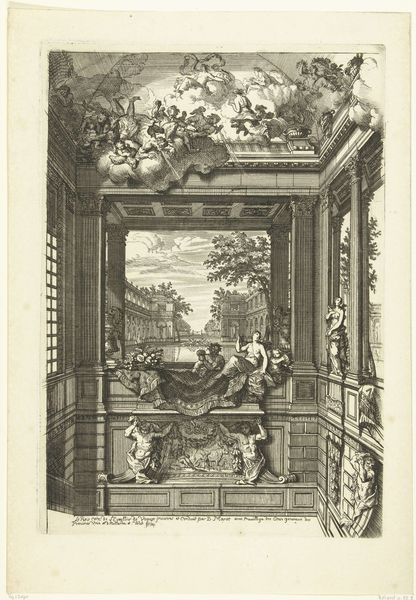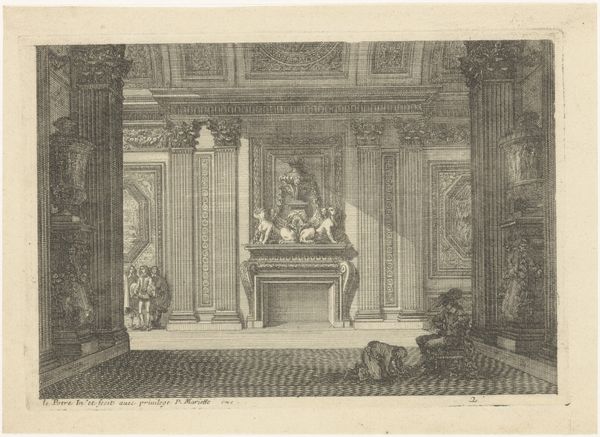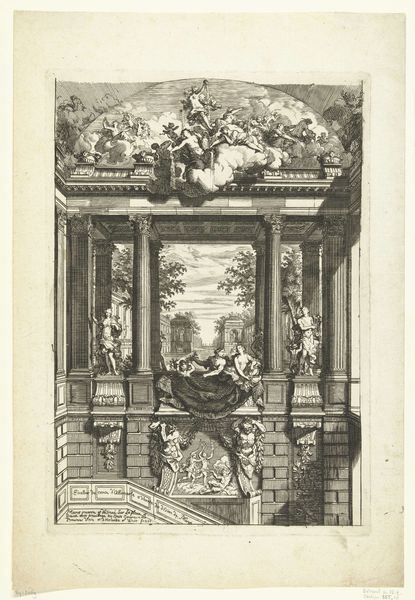
Dimensions: height 276 mm, width 188 mm
Copyright: Rijks Museum: Open Domain
Curator: This etching, known as "Hemelbed", dates back to before 1800 and comes to us from an anonymous hand. Currently, it resides here at the Rijksmuseum. The subject is precisely what the title implies, "Four Poster Bed", so what are your initial thoughts? Editor: Claustrophobic. Even as a print, the density of detail and the sheer ornamentation feel…stifling. All that baroque excess presses down on the space. Curator: It's a perspective. Given the era, such beds weren't simply for sleeping; they were potent symbols of wealth, power, and, especially for royalty, public life. Court life often involved receiving guests, or even conducting official business, right from the bed. Editor: That does recontextualize the composition, knowing it's a staged display, I appreciate the geometry at play. The rigid lines of the canopy play against the cascading folds of fabric. And how the open doorway offers an alternative orthogonals to the heavy enclosure around the bed, a subtle contrast to what would be seen from the interior. Curator: Precisely. Notice also the open doorway offers not just a glimpse of another room but suggests the constant presence of servants and courtiers, a life constantly on display. We can't forget the historical weight this object and artwork embodies: disease was a major preoccupation. So this type of enclosure would provide both some thermal regulation for winter, as well as much coveted privacy, protection and separation from fleas, vermin and disease. Editor: Ah, it was intended as a sanctuary too, not just a gilded cage! Curator: In a way, it was both. Now that the baroque framework is exposed, perhaps we can see this ornate bed less like an over the top encasement and see it in context with its surrounding history. How does it make you feel? Editor: You're right. Knowing the history softens my earlier reaction. I’m starting to appreciate the craft—the intricacy of the carving, the textures achieved in the etching—it’s now more alluring than I first thought. Curator: See? Sometimes context illuminates composition. A rich, perhaps too rich, artifact of its era, wouldn’t you agree?
Comments
No comments
Be the first to comment and join the conversation on the ultimate creative platform.
